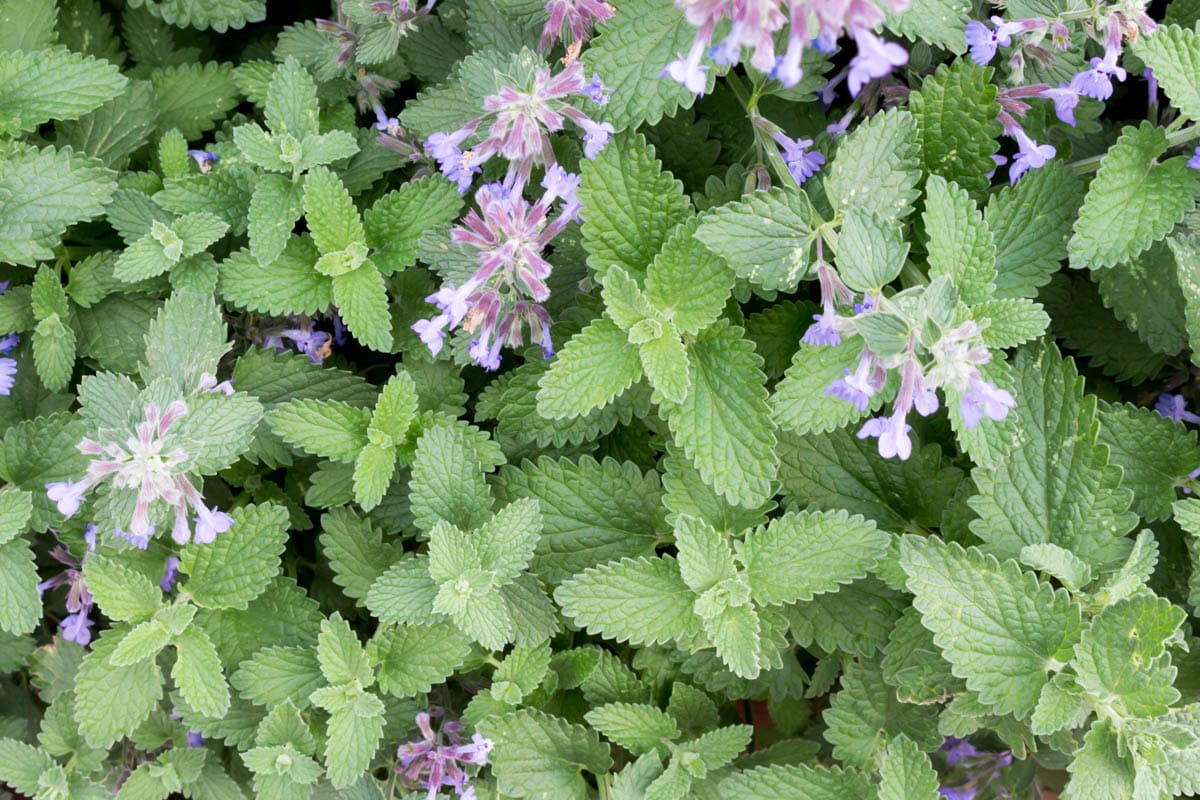What is catnip?
Catnip is a perennial herb from the mint family Labiatae and is native to Southern and Eastern Europe and Asia. It has now become naturalised in New Zealand, North America, Southern Canada, and Europe. Catnip is well known among pet owners and veterinarians due to its ability to induce a high in cats. There are 250 species of catnip in the world, Common catnip (Nepeta cataria) and Catmint (Nepeta mussinii) are the most commonly used.
How does catnip work?
The active ingredient in catnip is an essential oil called nepetalactone, which can be found in the leaves and stems of the plant. The catnip response is believed to be polygenic inheritance (caused by multiple genes) and affects approximately 60% of cats. It has no effect on kittens under the age of 8 weeks.
Nepetalactone mimics the cat’s own feel-good hormones which are released during sexual activity.
- When the cat inhales these chemicals they bind to receptors located at the back of the cat’s nose.
- These receptors convert the chemicals into an electrical signal which is transported to the amygdala (responsible for emotions) and the hypothalamus (responsible for behavioural responses) which are both located within the brain.
Common behavioural signs in cats exposed to catnip include:
- Sniffing
- Chewing, licking and head shaking
- Chin and cheek rubbing
- Head rolling and body rubbing
Some cats will become hyperactive on catnip, while a small percentage can become aggressive towards other cats. Drooling is common in cats affected by catnip and is completely harmless.
The effects last between 5-10 minutes, after a catnip high, cats remain unaffected by repeat exposure for several hours.
Is it safe to give cats catnip?
Catnip is completely safe for cats, however, do not give to pregnant cats as it is a known uterine stimulant.
How to use catnip
- As a treat
- To encourage play (and exercise)
- As a training tool, such as when training a cat to use a cat scratching post
- When introducing a new cat to the house
- When introducing a new cat to a resident cat
Where can I buy catnip?
Most pet shops sell dry catnip as well as catnip spray.
Plants and seeds are available in the herb section of most garden centres. Catnip is easy to grow in pots and gardens, it likes well-drained soil in a sunny position.
Homemade catnip spray
- Add some fresh or dried catnip leaves and boiling water to a jug and allow to cool.
- Strain to remove the leaves and add to a spray bottle.
Spray on cat toys, scratching posts and blankets.
How much catnip can I give my cat?
A sprinkle or two of fresh or dried catnip is adequate for a cat. There is no specific dose or frequency.
It is not possible for a cat (or human) to overdose on catnip.
What other plants do cats enjoy?
Alternatives to catnip include the following plants:
- Valerian root
- Silvervine
- Tartarian honeysuckle
- Northern ground cone
- Indian nettle roots
- Wild kiwi
- Buckbean
- Cat thyme
You can read more about these plants here.

